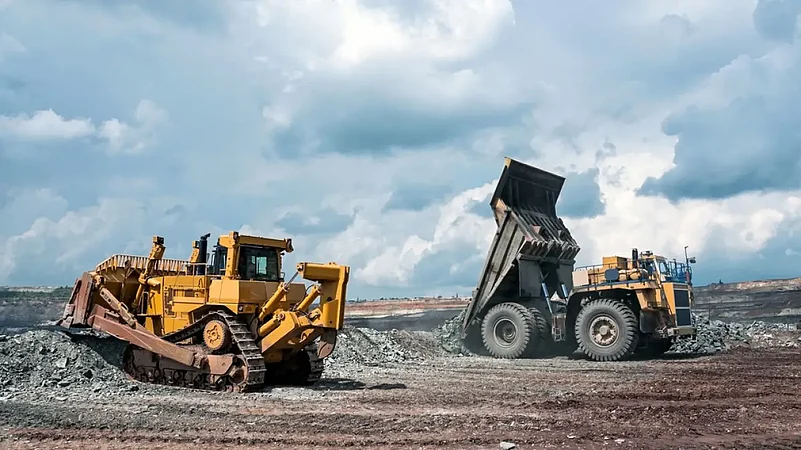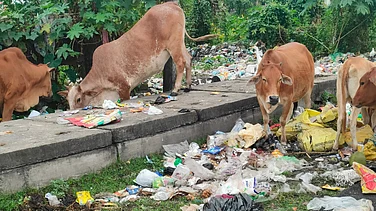Amid the global race to secure critical minerals, India is currently looking to lift the barriers that restrict miners from extracting any mineral apart from the one that they were originally licensed to extract. As per officials aware of the development, the government is expected to introduce an amendment to the Mines and Minerals (Development and Regulation) Act (MMDR Act) in the monsoon session of Parliament, starting on Monday.
The reform targets several mines allocated before 2015, a time when mineral blocks were allotted without any auctions. As per a Mint report, this will permit leaseholders to commercially mine newly-discovered strategic minerals, including lithium, cobalt, and rare earths – key for strategic or critical sectors like clean energy, automobiles, electronics, and defence, among others.
New provisions of the Act are expected to cover over 2,500 legacy mining leases, many of which are currently idle. The move will unlock the potential of these mines and will further revive operations and extract minerals critical to India’s economic and strategic goals.
Officials further told Mint that under the proposed norms, the miner will be given a separate licence through a deemed approval process, without any fresh auctions or additional premiums.
What are the Current Provisions Under MMDR Act?
Currently, miners in the country can’t extract any mineral that is not listed in their original lease agreement, even if it is found during exploration. The rule is followed in the case of mines allotted by states to mining entities, before auctions were made mandatory for the allocation of any natural resource. As a result of this, many valuable associated minerals were either ignored or discarded as waste.
However, in comparison, countries with mature mining regimes like Australia, Indonesia and Brazil allow their leaseholders to extract all economically-viable minerals within the same block, after following certain clearances.
Meanwhile, miners in India can also extract any mineral from mines auctioned since 2015, subject to paying a premium. As per reports, since 2015 only about 450 mines have been auctioned.
What is Expected From the New Reforms?
Under the amendments planned, the miner will be given a separate licence for mining the new mineral, but a process of deemed approval would be required, without any additional premium, one of officials stated.
“Unlike auctioned blocks, currently there is no provision for the inclusion of associated critical minerals in a non-auctioned mining lease. Now, these non-auctioned operational mines would be allowed to mine even critical minerals.”
With the coming of the new framework, miners will be able to extract minerals that are designated as critical to the economy, even if discovered unintentionally during a bulk mining process of other mainstream minerals.
How is India Currently Placed on the Critical Minerals Segment?
Associated critical minerals refer to strategic minerals like cobalt, germanium and cadmium that are found in small quantities besides other minerals like lead, zinc and copper. Rare earth minerals come us a subset of critical minerals.
Government data reveals that as of March 31, 2023, there were 3,007 mining leases in India, excluding coal, lignite, petroleum, gas, atomic and minor minerals. These, spread across 23 states and Union Territories, covered a total area of 2.82 lakh hectares and were granted by state governments for 34 minerals. However, half of them are non-operational and officials say that the upcoming policy can encourage the reopening of many of these dormant mines.
Domestic demand as well as geopolitical concerns over China’s dominance in rare earths has driven India to ramp up its efforts in securing crucial minerals. The Government approved the National Critical Mineral Mission earlier this year to coordinate these efforts.
The MMDR Act was also amended in 2023 to allow the Centre to auction mining leases and composite licences for critical and strategic minerals listed under Part D of the First Schedule of the Act.
After the amendment, the Centre auctioned 24 critical mineral blocks, including four mining leases and 20 composite licences. A total of 44 critical mineral blocks were auctioned between 2020-21 and the 2023 amendment, among which 20 were auctioned by state governments.
Even till now, about 450 mineral blocks have been auctioned, including 24 critical mineral blocks following the MMDR 2023 amendment. On the other hand, the Centre in 2024 decided to take over the auctioning of exploration licences for critical and deep-seated minerals, due to the poor uptake by states. That was the first time that India began offering exploration licences to attract specialised mining and exploration companies to identify new deposits.
Additionally, under the Mines and Minerals (Development and Regulation) Amendment Bill, 2023, the Centre was given powers to notify and auction exploration licences for 29 critical and deep-seated minerals. Despite these moves, state level progress has been slow.
According to mining industry body, Federation of Indian Mineral Industries, the government's proposal is a “low-hanging fruit" and it could possibly deliver quick results, given that the right technology is used.
Further, India has also joined hands with the US, Japan, and Australia under the Quad Critical Minerals Initiative and has committed to coordinate efforts to diversify and secure mineral supply chains.
































